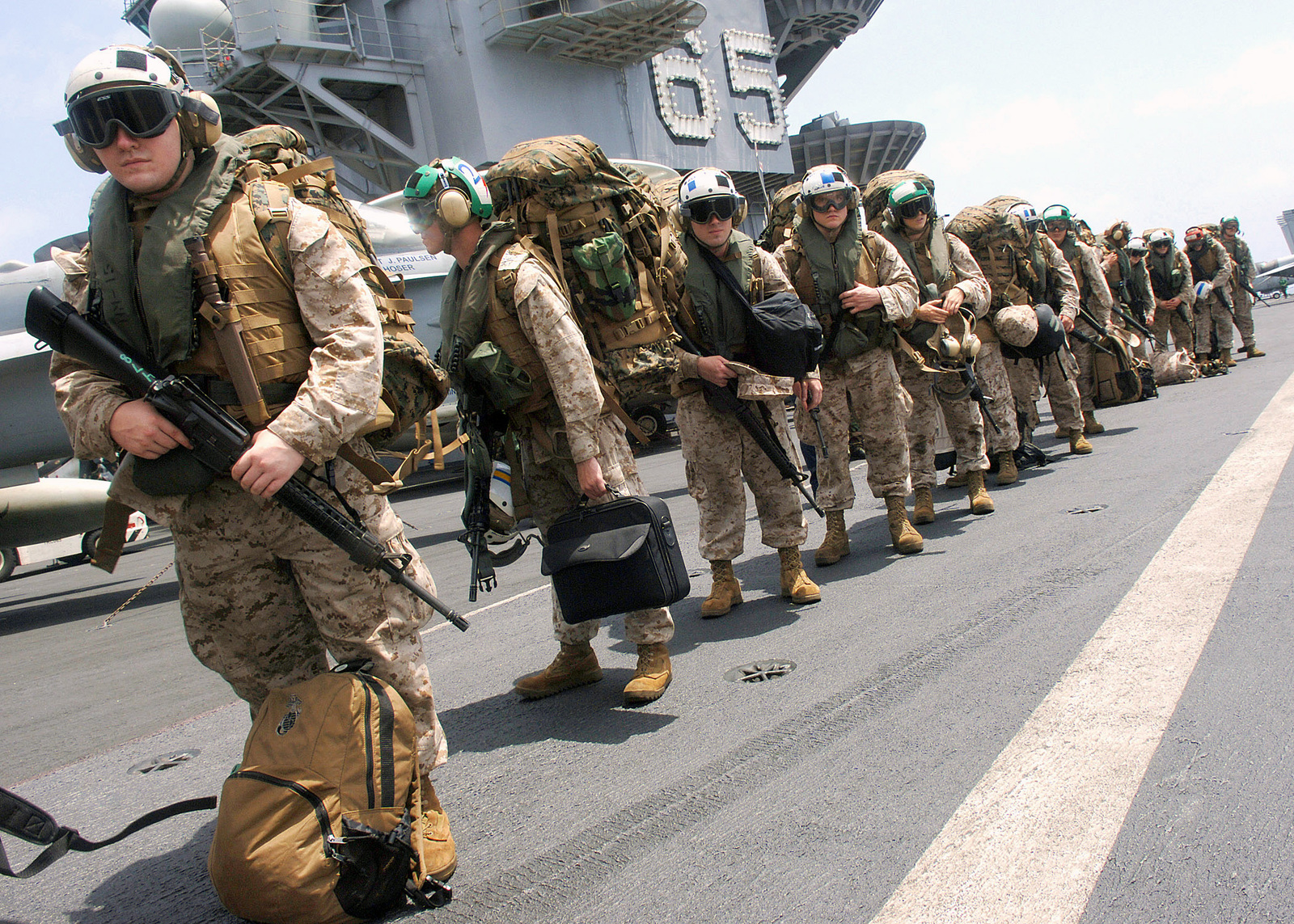A shallow water exercise by two US Marine Expeditionary Forces successfully tested an array of new technology to facilitate shore landings, including unmanned systems to clear mines, the Marine Corps said on Thursday.
“The three-week exercise featured experimentation on new technologies such as the Vapor 55 unmanned aerial system, the Fusion Strategic Robotics System, and the REMUS unmanned underwater vehicle, as well as cross-training with US Navy Explosive Ordnance Disposal Mobile Unit 1, underscoring the importance of integrating new capabilities,” the Marine Corps said in a press release.
A recently formed Littoral Engineer Reconnaissance Team (LERT), with Marines from the I and III Expeditionary Forces, is trained to employ personnel and unmanned systems to identify, update and confirm or deny suitable beach landing sites for follow-on forces ashore, the release said.
“However, once man-made or natural obstacles are identified, the LERT turns the fight over to the Littoral Explosive Ordnance Neutralization platoon or Naval Mine Countermeasures Company to render that threat safe, according to the LERT officer in charge, First Lt. Brandon Cavil said in the release.

During the exercise, LERT Marines gained access to a semi-permissive beach and reconnoitered multiple objectives with the Vapor-55 drone and small reconnaissance elements to locate, identify, and observe potential landing zones, the release added.
Simultaneously, Marines in rubber combat raiding craft used the underwater drone to identify subsurface mines and other explosive hazards, according to the release.
US Drone Maker Adds Firepower, Short Takeoff-Landing Ability to Latest Model
In another news, Mojave, an upgraded combat drone unveiled on Thursday, will provide forward-based forces with bigger payloads, as well as the ability to take off and land on improvised and shorter runways than previous models, the developer General Atomics said.
“Mojave provides options for forward-basing operations without the need for typical airport runways or infrastructure. It can land and take off from unimproved surfaces while also retaining significant advantages in endurance and persistence over manned aircraft,” General Atomics said in a press release.

The aircraft was designed so weapons can be quickly loaded in austere sites located close to the conflict zone, the release said.
Mojave is based on the avionics and flight control systems of MQ-9 Reaper and MQ-1C Gray Eagle-ER but is focused on short-takeoff and landing (STOL) capabilities and increased firepower. It features enlarged wings with high-lift devices, and a 450-HP turboprop engine, the release added.
With a payload capacity of 3,600 pounds, Mojave can carry up to 16 Hellfire or equivalent missiles. The drone features a sensor suite including Electro-optical/Infrared (EO/IR), Synthetic Aperture Radar/Ground Moving Target Indicator (SAR/GMTI) and Signal Intelligence (SIGINT) to support land or maritime missions, according to the release.
- Via Sputnik News Agency
- Follow EurAsian Times on Google News




